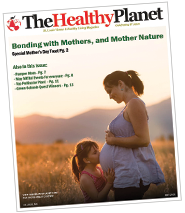By Gretchen Morfogen
Keith Woodward’s ground-breaking work Devil in the Milk outlines a scientific tale of modern diseases and their relationship to the food we consume. It also outlines how corporate interests can shape the way in which information about food and health is relayed to the public. The author of this book draws upon his experience as a professor of agribusiness to charter an information channel that may help in the fight against diabetes, cardiovascular disease, autism and even schizophrenia.
The heavily science-based information is assimilated from several studies on just how cow’s milk is broken down by our bodies and its reaction positively or negatively as a nutrient.
Milk is comprised of several different components that come together to produce one singularly unique food. These components (cream, milk solids and whey) each interact with our bodies in different ways; but it isn’t the cream or whey that’s the issue but the milk’s casein (A white, tasteless, odorless protein precipitated from milk by rennin). It seems there are two primary forms of casein contained in cow’s milk: A1 beta casein and A2 beta casein. A2 beta casein is the elder of the two, while A1 beta casein is a genetic variant that scientists believe began appearing in cow’s milk a few thousand years ago. (Minimal in an evolutionary perspective)
According to the theory which is substantiated by extensive scientific research (16 years), this variation in casein type results in cognitive, mental and physical illness among our society at large. Because of a slight differentiation in the amino acid construction of the two types of casein, each type is broken down differently in our bodies. Due to a weak bond between two amino acids, A1 beta casein breaks down to an opioid (any one of a group of substances that produce pharmacological and physiological effects similar to those of morphine) called betacasomorphin 7 or BCM7. I told you it was scientific.
Woodward discusses the considerable evidence that BCM7 can negatively impact the health of both humans and animals. It can trigger autoimmune reactions and is linked to neurological impairment similar to that seen in both autism and schizophrenia. Also, due to BCM7’s ability to create a significant immune response, there’s a very direct connection between A1 milk and diabetes that is not equivalent to A2 milk.
Most dairy cows in North America have this genetic mutation and are producing milk with A1 beta casein. Asian, African and some European breeds still produce the older A2 beta casein that does not cause such negative health effects due to the fact that its amino acid bonds are strong and it doesn’t break down in the manner that A1 beta casein does. Animals that produce A2 milk exclusively are yaks, sheep and goats.
Much of the research was done with the A2 milk at odds with the mega dairy corporations that produce A1 milk exclusively. 75% of the world’s 300 million dairy cows produce milk with the A1 protein. I remind myself that just because a corporation has a vested interest in a certain product does not necessarily mean that the scientific conclusions are wrong. Once again the ever present dollar is controlling our government and our health by allowing this pivotal and dated information to be swept under the bureaucratic rug. But wait and see – it will at some point, become a marketing position for the dairy industry just as the movement to inform consumers of the antibiotic and hormone free milks are today…
Recently, I have been consuming raw milk from Guernsey cows, dairy cows with the highest levels of A2 beta casein vs. milk from industrial dairy; Holsteins whose milk is high in A1 casein (the cute black and white cows). My new raw milk regimen has been a great source of nourishment and I haven’t had the same digestive issues with conventional dairy ever since. It makes perfect sense to me that my body would respond to a pure food that hasn’t been processed, broken down, reformulated, or refined, organic or not (besides it’s creamy and delicious!). Purchasing dairy products outside of our cow allocation, I would probably choose from the divine plethora of sheep’s and goat’s milk cheeses.
In my years working at a cheese counter I cannot tell you how many people I have spoken to regarding lactose intolerance or casein specific allergies- I feel this is a direct correlation to the issues discussed in the book. Their bodies aren’t equipped to process the A1 protein and disease or other malady is the result. (Another reason to drink milk from the region in which you live-a traceable source)
Devil in the Milk is insightful reading that underlines the importance of truly traditional foods: don’t simply choose whole or healthy foods, but eat foods that we evolved on.


